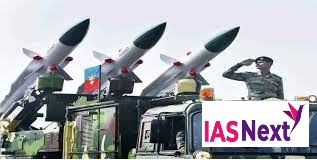CURRENT AFFAIRS
Get the most updated and recent current affair content on Padhaikaro.com
What is the negative imports list for defence?
- IAS NEXT, Lucknow
- 04, Dec 2021

Reference News:
The Government has brought in few changes in its negative imports list policy. This includes:
- The armed forces will now be able to import defence equipment in certain circumstances even if it figures in the negative import list.
- This includes scenarios where there is an “immediate requirement” that domestic industry cannot cater to, or if the safety of soldiers is at stake due to inadequacies in an indigenous product.
- There is also a provision now to review or remove items mentioned in the negative import list, which was first formulated in August 2020.
What is the negative imports list policy/positive indigenisation list?
Introduced in August 2020, the negative list essentially means that the Armed Forces—Army, Navy and Air Force—will only procure such items from domestic manufacturers.
- The manufacturers could be private sector players or Defence Public Sector Undertakings (DPSUs).
Why was this policy needed? What will be the impact?
As per Stockholm International Peace Research Institute, India has been the second largest importer between 2014 and 2019 with US$ 16.75 billion worth of imports during this period.
- The government wants to reduce the dependence on imported items in defence and give a shot in the arm to the domestic defence manufacturing industry.
- By denying the possibility of importing the items on the negative list, the domestic industry is given the opportunity to step up and manufacture them for the needs of the forces.
2nd list:
The Defence Ministry notified the second negative import list, in May 2021, of 108 items that can now be only purchased from indigenous sources. The new list takes the total number on the list to 209.
- The list comprises complex systems, sensors, simulator, weapons and ammunitions like helicopters, next generation corvettes, Air Borne Early Warning and Control (AEW&C) systems, tank engines.
Significance and implications of this move:
- Recognises the potential of local defence industry.
- Invigorate impetus to domestic Research and Development by attracting fresh investment into technology and manufacturing capabilities.
- Provides an excellent opportunity for ‘start-ups’ as also Micro, Small and Medium Enterprises (MSMEs).